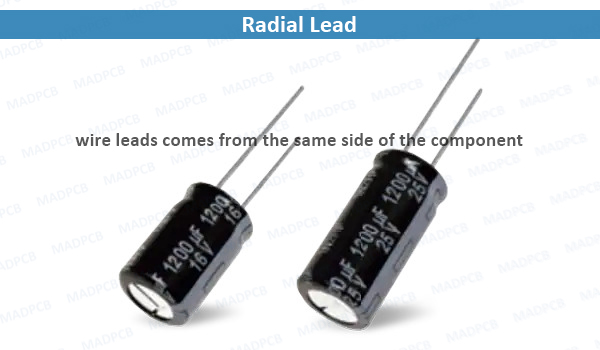Radial Lead is a through-hole electronic component package in which the wire leads for connection or solder comes from the same side of the component. Typically, the radial leads are closely positioned next to each other. Twin lead electronic components designed for flat mounting through holes in a PCB generally feature one of two lead configurations -radial and axial.
Radial leads project more or less in parallel from the same surface or aspect of a component package, rather than from opposite ends of the package. Originally, radial leads were defined as more-or-less following a radius of a cylindrical component (such as a ceramic disk capacitor). The parallel leads projecting from a single mounting surface gives radial components an overall “plugin nature”, facilitating their use in high-speed automated component insertion (“board-stuffing”) machines.
When needed, an axial component can be effectively converted into a radial component, by bending one of its leads into a “U” shape so that it ends up close to and parallel with the other lead. Extra insulation with heat-shrink tubing may be used to prevent shorting out on nearby components. Conversely, a radial component can be pressed into service as an axial component by separating its leads as far as possible, and extending them into an overall length-spanning shape. These improvisations are often seen in breadboard or prototype construction, but are deprecated for mass production designs. This is because of difficulties in use with automated component placement machinery, and poorer reliability because of reduced vibration and mechanical shock resistance in the completed assembly.

